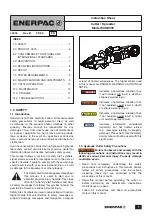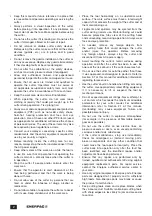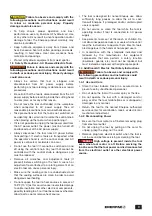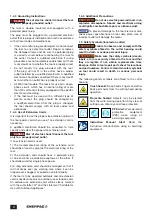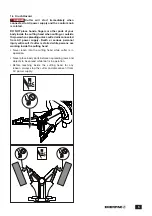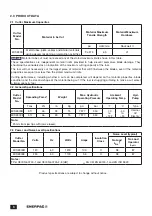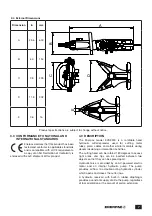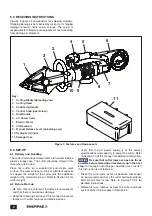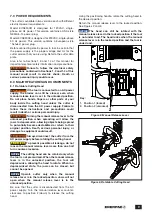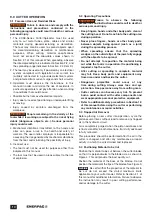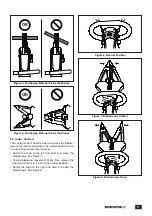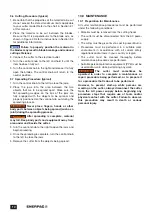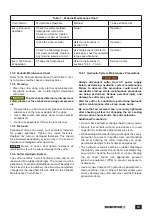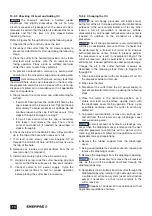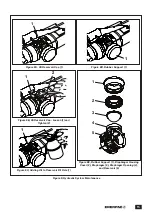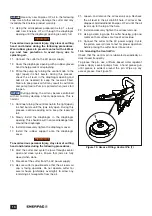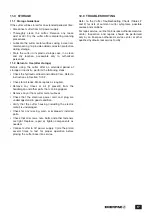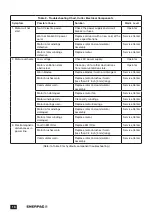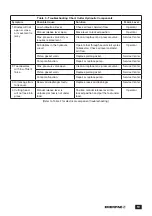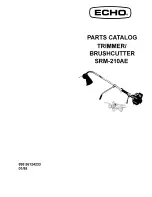
9
7.0 POWER REQUIREMENTS
The cutter is available in two versions, each with different
electrical power requirements:
Model ECSE300B is designed for 120VAC, single-
phase, 60 Hz power. This version contains a USA style
NEMA 6-15 power plug.
Model ECSE300E is designed for 230VAC, single-phase
50 Hz power. This version contains a European style
“Schuko” power plug.
Before connecting electric power to tool, be certain that
the power supply is the proper voltage and Hz for the
cutter version that you are using. Refer to the cutter data
plate.
Also refer to Sections 1.3 and 1.4 of this manual for
important electrical safety information and precautions.
NOTICE:
WARNING
Failure to follow the electrical safety
precautions contained in Sections 1.3 and 1.4 of this
manual could result in electric shock. Death or
serious personal injury could occur.
8.0 MAJOR FEATURES AND COMPONENTS
8.1 Rotatable Cutting Head
NOTICE:
WARNING
If the tool is connected to an AC power
supply, the blades can still be closed, even when
manual release lever is set to the unlocked position.
Do not place hands, fingers or other parts of your
body inside the cutting head unless the cutter is
disconnected from the AC power supply. Failure to
follow these instructions and precautions could
result in death or serious personal injury.
NOTICE:
WARNING
Turning the manual release lever to the
unlocked position when spreading will allow the
jaws to depressurize, allowing objects being spread
to potentially become destabilized or return to their
original position. Death, serious personal injury, or
damage to equipment could result.
NOTICE:
WARNING
Always disconnect the cutter from the
AC power supply before rotating the cutting head.
CAUTION
To prevent possible oil leakage, do not
loosen the manual release lever more than one half
turn counter-clockwise.
NOTICE
The cutting head can be rotated only when
the tool is not pressurized. When the manual release
lever is in the unlocked position, the tool will
depressurize, allowing the head to rotate. When in a
depressurized state, the jaws can be closed, but
cannot be opened.
NOTICE
Operate cutter only when the manual
release lever is in the locked position. Jaws will not
open when the manual release lever is in the
unlocked position.
Be sure that the cutter is disconnected from the AC
power supply. Turn the manual release lever counter-
clockwise to position 2 (down) to release the cutting
head.
Using the positioning handle, rotate the cutting head to
the desired position.
Return the manual release lever to the locked position.
See Figures 2 and 3.
NOTICE
The head can still be rotated with the
manual release lever in the locked position if the tool
is not under load. The head locks when the manual
release lever is in the locked position and the tool is
under load.
1
2
Figure 2, Manual Release Lever
Key:
1. Position 1 (locked)
2. Position 2 (unlocked)
Figure 3, Rotatable Cutting Head
Summary of Contents for ECSE300
Page 20: ...WWW ENERPAC COM...

